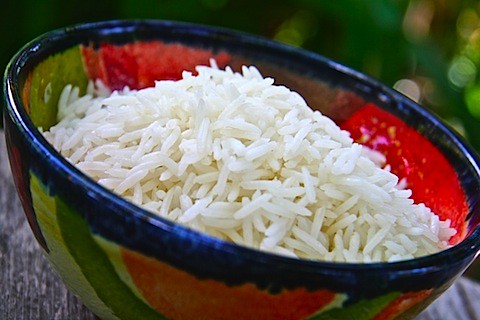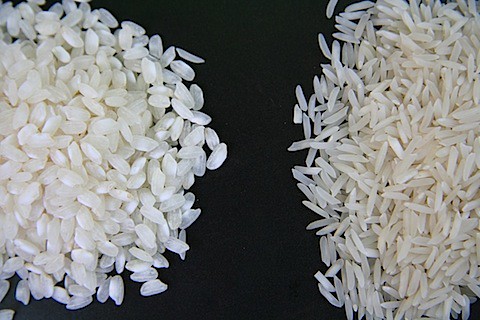How to Cook Rice — Reader’s Question

When I held the contest for Dana’s Top Ten Table giveaway, I asked you to post your dinner dilemmas and promised to answer them all. So far, Dana has answered 10 of your most pressing questions in a podcast (don’t panic, I’m going to be posting recaps) and I covered Debbie’s yam versus sweet potato question.
Today, I’m addressing Marta from Calgary’s question. She wrote:
I cannot believe I’m admiting to this in public… I don’t know how to make white rice!! Yes, just plain, fluffy white rice! Mine always turns out sticky and clumpy. How do people get each grain to be separated?!?!?!
I had the same issue, Marta. I now stick to basmati and follow the directions I posted for Perfect Basmati Rice. Because the technique requires light frying, I do not rinse the rice. I buy good quality basmati and have never had an issue. To be on the safe side, I stick to one or two trusted brands. The one time I ventured into the bulk bin, I regretted it.
For those who want to move beyond basmati, here’s a quick primer on rice.
While there are far too many types of rice to deal with in one blog post, the two main types you’ll find in the grocery store are short grain and long grain. Short grain rice tends to be starchier and is more tender and sticky when cooked. This makes it perfect for sushi, risotto and rice pudding. Long grain rice tends to have less starch and is drier when cooked, separating into drier, fluffier individual grains.
The rice on the left is short grain arborio. The rice on the right is basmati, a long grain rice. They are not interchangeable.

No matter how you cook arborio rice, it will not cook up fluffy and light. Conversely, even I find it hard to make basmati sticky.
Long grain rice may or may not need rinsing. If you’re steaming or boiling the rice, rinsing won’t make a difference. But if you’re making a pilaf, which requires frying, you don’t want to rinse the rice because it will steam.
Short grain rice, on the other hand, is usually rinsed — sometimes several times — to remove the outer starch. Of course, there’s always an exception. Don’t rinse arborio rice when making risotto because you want all the sticky starch to make the risotto as creamy as possible.
Now before you ask for specifics, I’d follow the instructions on the package. A lot depends on the type of rice you buy and how it’s been processed. However, to get a jump start on the most common questions:
- Most rice is cooked with 2 parts water to 1 part rice. Basmati, is an exception and requires 1 1/2 cups water to 1 cup rice.
- 1 cup of uncooked rice yields 2 to 3 cups of cooked rice. Again, this depends on the type of rice you’re making.
- If stored in a cool, dark, dry pantry, uncooked rice keeps for years. But once cooked? It will survive only a few days in the refrigerator.
So that’s the long and short (grain) of rice. Which type do you prefer and how do you make it?